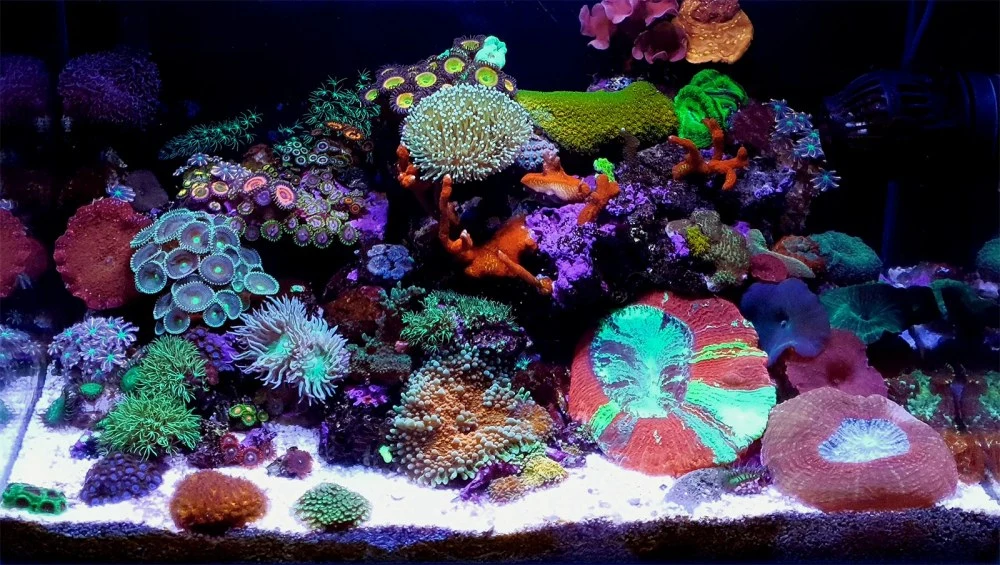Stunning 10-Gallon Reef Tank – Snow_Phoenix's TOTM | NanoReef

Tank Specifications
Volume: 10 Gallons / 37 Liters
Dimensions (L × W × H):
18.0" ×
12.0" ×
11.0"
45.7cm ×
30.5cm ×
27.9cm
Equipment List
- Salt: Fritz
Frequently Asked Questions
How do you maintain consistent water parameters in a small reef tank?
To maintain consistent water parameters, regularly test your water and perform weekly 80% water changes. Use a high-quality salt mix like Fritz RPM to maintain optimal levels of salinity and other parameters.
What dosing routine do you follow for your corals?
I dose 2ml of Alkalin 8.3 buffer and Calcium buffer daily, and 1.5ml of Magnesium Buffer. Additionally, I add drops of Vitamin C and Iodine once a week and use Phytoplankton for feeding.
What are some effective filtration options for a small reef tank?
For a small nano reef like mine, I use a hang-on-back (HOB) filter with activated carbon and filter floss. This provides adequate mechanical and chemical filtration.
How do you manage algae growth in a small tank?
To manage algae growth, perform regular water changes, maintain good water parameters, reduce feeding frequency, and ensure proper lighting duration. Scraping the glass and stirring the sand bed also helps.
How do you introduce new corals into your tank safely?
Always dip corals in a treatment solution before adding them to the tank to eliminate pests. Acclimate them properly to your tank conditions to reduce stress.
What is the best way to feed your reef tank inhabitants?
Feed your tank inhabitants a mix of quality pellets for shrimps daily and a variety of frozen foods like copepods and brine shrimp weekly. Diversifying their diet will promote health.
How do you encourage coral growth and health?
Coral growth is encouraged by providing stable water parameters, sufficient light, and regular feeding. Use coral foods such as Reef Roids or Zooplankton to promote better nourishment.
What is your maintenance routine for a small reef tank?
My maintenance routine includes daily checks on livestock, weekly water changes of 80%, replacing filter media, scraping algae, stirring the sand bed, and monitoring equipment.
How do you deal with pest outbreaks in your reef tank?
To handle pest outbreaks, quarantine any new additions, dip corals to prevent introduction, and monitor parameters closely. If necessary, treat the tank with appropriate medications.
What strategies do you use to manage temperature fluctuations in your tank?
To manage temperature, I rely on air conditioning and fans to keep the temperature stable. Manual monitoring is essential, and avoiding direct sunlight on the tank helps control heat.